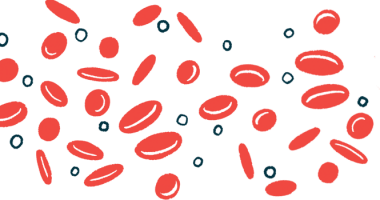Hemex awarded $3M to bring Gazelle diagnostic test to US
Device is in use in 27 countries across India, Africa, the Middle East, and Southeast Asia

Hemex Health has been awarded $3 million to bring Gazelle, its point-of-care, rapid diagnostic testing device for sickle cell disease (SCD) and beta thalassemia, to market in the U.S.
The company will use the three-year award from the National Heart, Lung, and Blood Institute (NHLBI) to seek U.S. clearance for the device.
Gazelle is already used in 27 countries across India, Africa, the Middle East, and Southeast Asia, according to Hemex, whose goal it is to bring accurate testing to underserved communities.
“As we have done around the world, Hemex hopes to use our products to bring the needs of sickle cell and beta thalassemia patients into the light of day by reaching the hard to reach, and providing this population with the diagnoses they need to get effective treatment,” Patti White, Hemex’s CEO, said in a company press release. “I am incredibly proud of our team and our products, and grateful to NHLBI for the opportunity they have given us to bring our work to the U.S.”
Both SCD and beta thalassemia are caused by genetic mutations that affect the production of hemoglobin — the protein that carries oxygen in red blood cells. SCD is marked by an abnormal version of hemoglobin being produced, whereas in beta thalassemia, the body makes too little of it.
The gold standard method of diagnosing these disorders is cellulose acetate electrophoresis, which detects the presence of different versions of the protein based on their size. Typically, a blood sample is collected at a doctor’s office and sent to a diagnostic lab to test.
A diagnostic alternative
The Gazelle Hb Variant test is a smaller, automated version of electrophoresis. It requires minimal expertise and can be done routinely at doctors’ offices. Data indicate it’s just as good at diagnosing SCD, with an accuracy of 99% relative to standard tests.
The device returns results in as little as eight minutes, compared with the days it might take to get results from an external laboratory.
Hemex intends for the test to be an easy and affordable diagnostic alternative that can reach underrepresented communities that haven’t had access to this type of testing.
“Such a test that can also provide results in minutes provides an additional benefit, especially during community outreach events where participants could be lost to follow-up due to the length of time it might take for results to come back,” said Stephen Boateng, a pharmacist and director of research at the nonprofit patient group Sickle Cell 101.
In the U.S., it’s estimated that 100,000 Americans have SCD and up to 3 million are sickle cell trait carriers, meaning they don’t have the disease, but can pass it to their children.
“Millions of Americans are carriers of the sickle cell trait or beta thalassemia trait, but according to research, only a small percentage know their status,” White said. “This test can empower people to quickly learn their status, which may impact family planning or other important decisions.”
Earlier diagnoses, can also mean earlier and better care, resulting in longer and healthier lives, regardless of the community they live in.
“An accurate point-of-care test for sickle cell disease and trait is crucial in helping address the challenges of misdiagnosis and undiagnosed patients who could potentially miss out on lifesaving medical care,” Boetang said.
Hemex announced last year that it was upgrading Gazelle to more precisely measure fetal hemoglobin levels, making it useful for monitoring patients on hydroxyurea, a medication that boosts the levels of this type of hemoglobin. Fetal hemoglobin is normally produced during fetal development and is more effective at transporting oxygen than its adult counterpart.







